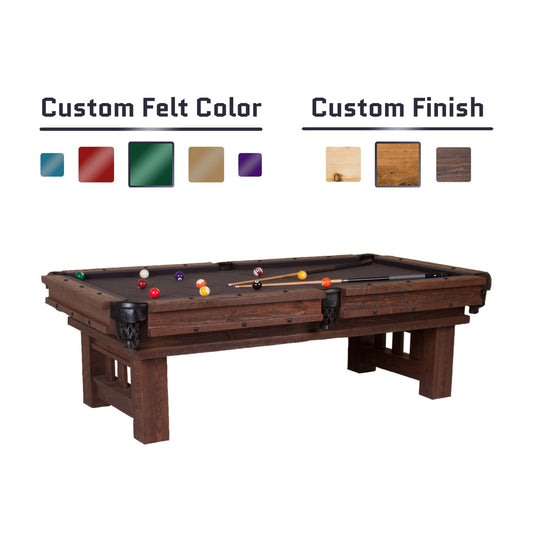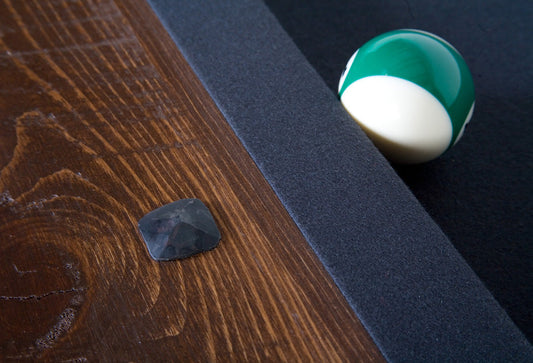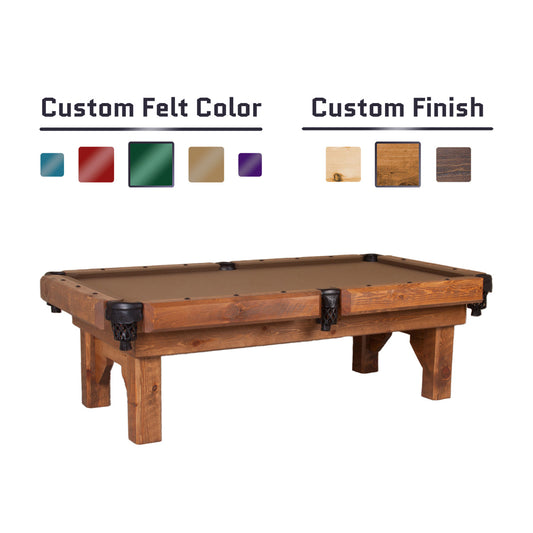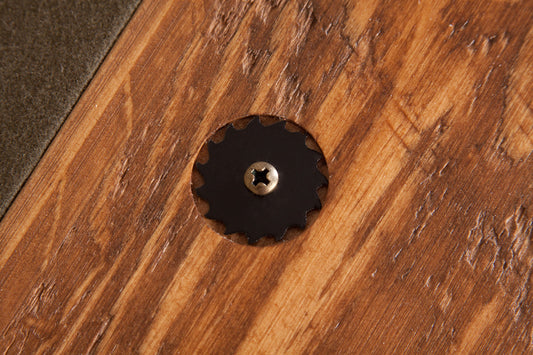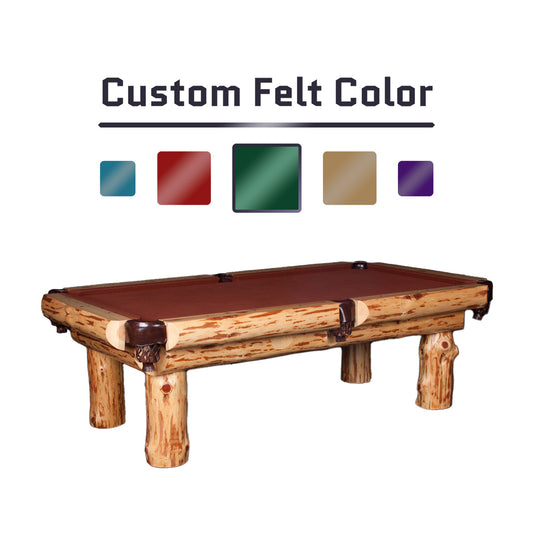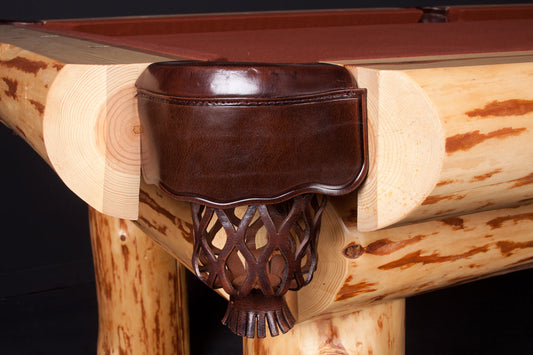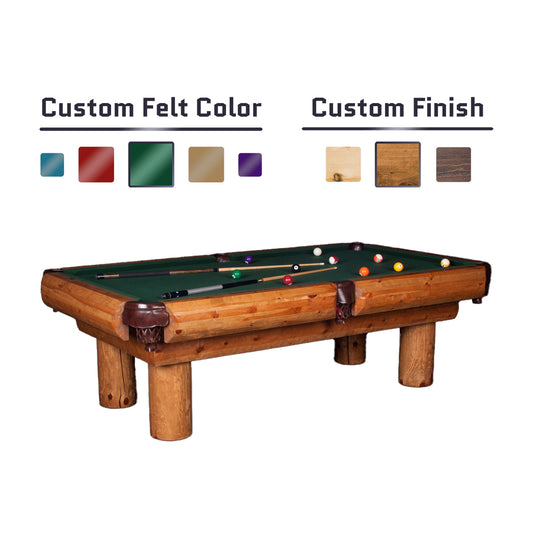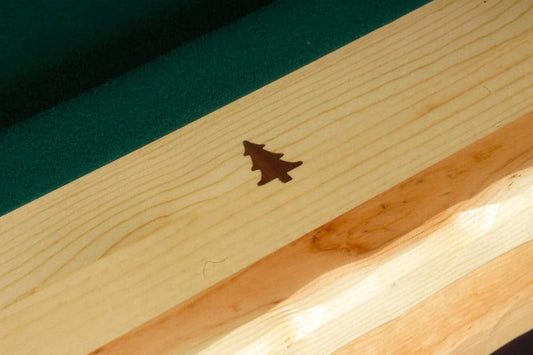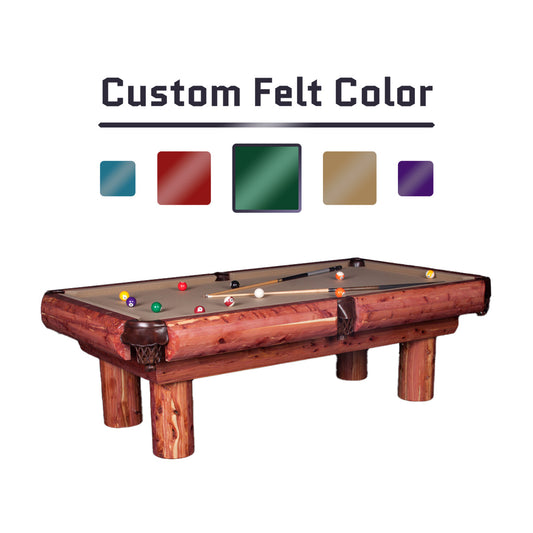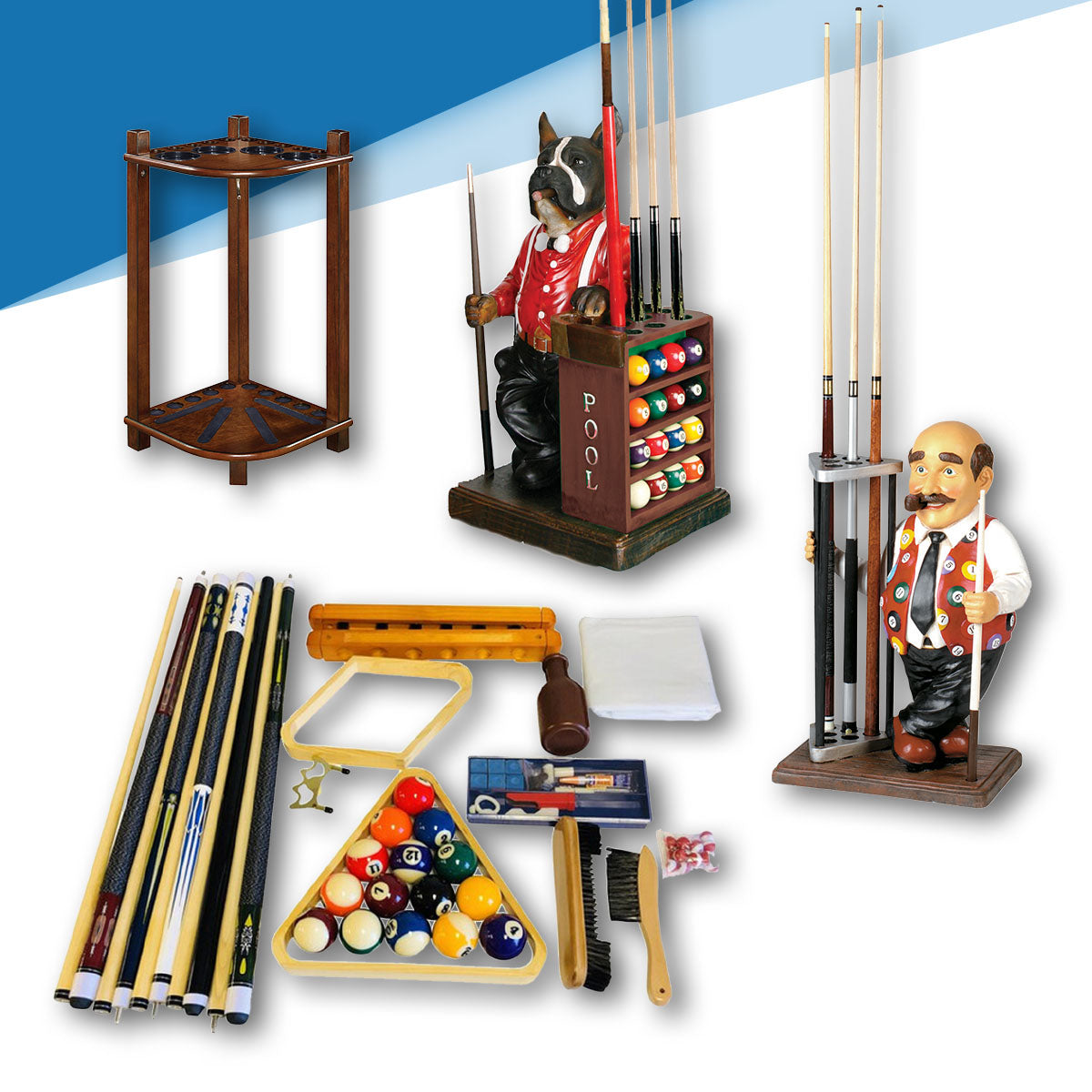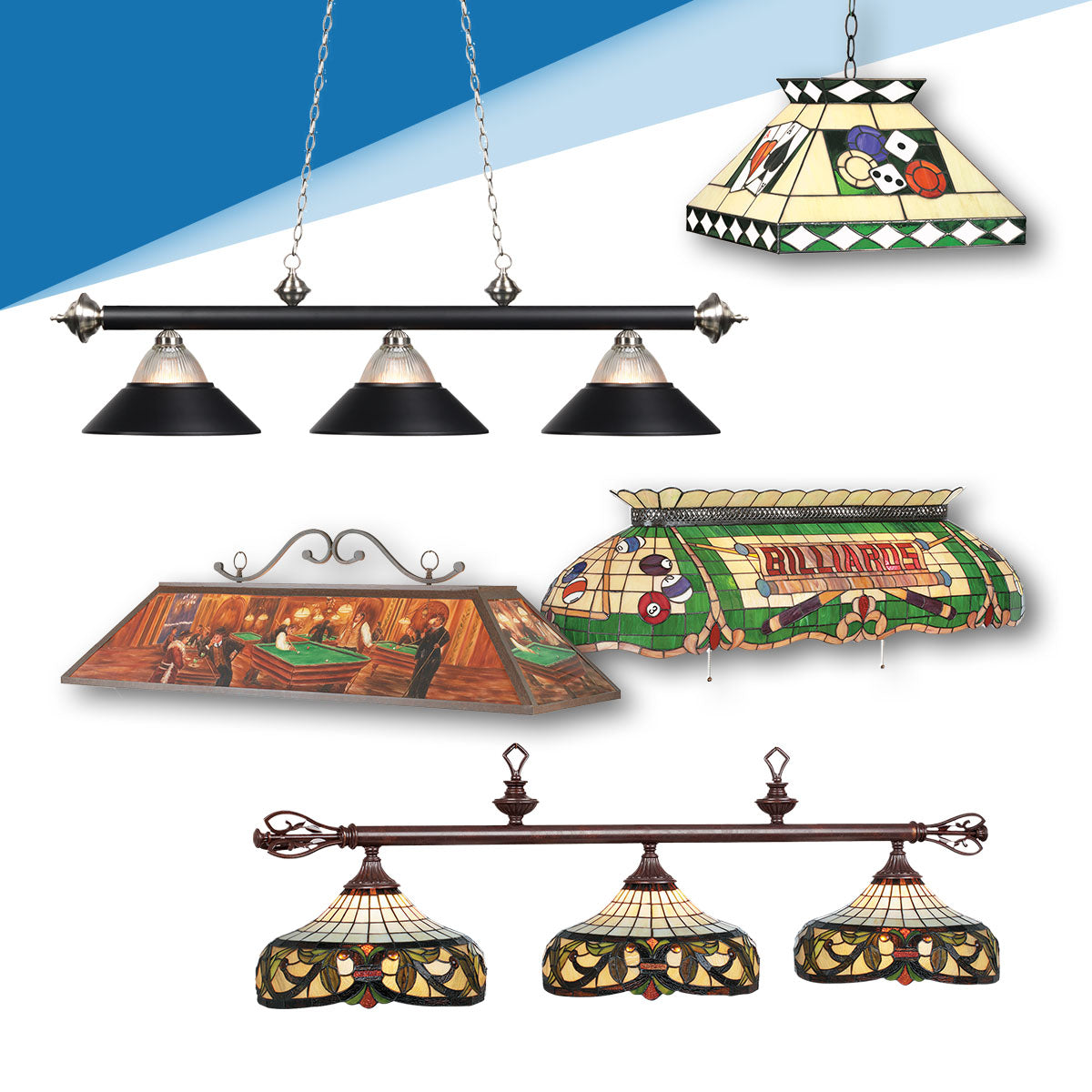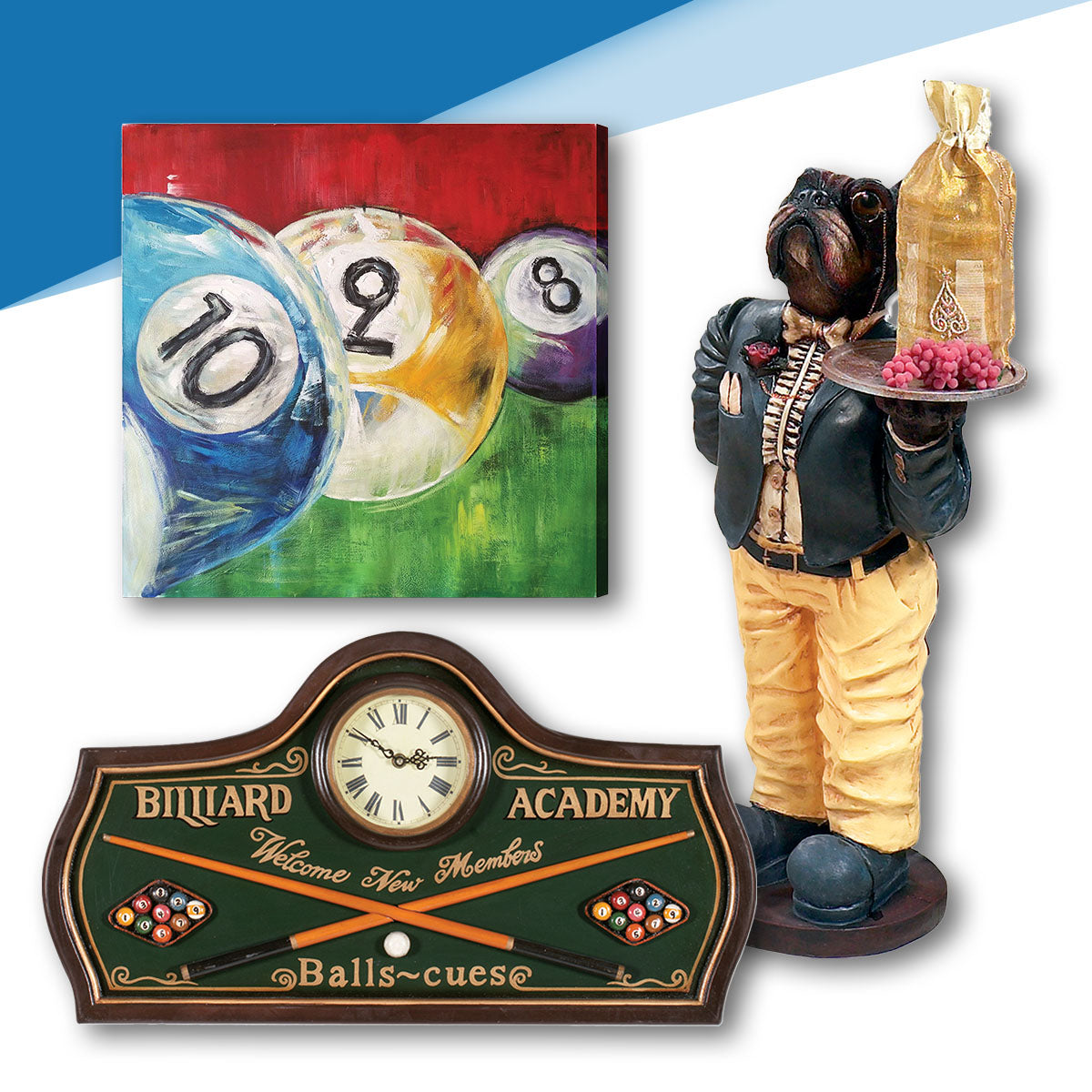Written by Daddy Cappuccino
16-minute read
Well, hey there, fellow cue-slingers and cue-ettes!
Hope you're all huddled around the billiards table, cue sticks in hand and that unmistakable spark of competition in your eyes. At Dad's Heaven, we've got something special lined up for you today. We're diving headfirst into the exciting world of 3 Player Pool Games! ✨🎱
You know, there's nothing quite like the thrill of a well-placed shot, the clack of balls, and the cheers (or groans) of friends as you navigate the green battlefield. But beware - we're not talking about your standard one-on-one pool. No, no. We're talking about games that involve not one, not two, but three players, each adding their own twist to the game.
So, whether you're a seasoned pool shark or just dipping your toes into the water, these games are bound to make your billiards nights unforgettable. Get ready for skill, strategy, and a whole lot of laughter as we explore these unique variations of the classic game.
Now, let's take a look at some of the most popular games designed for 3 or more players! 🍻
Table of Contents
1. Rotation: A Test of Cue Ball Control and Strategy
If you're up for a classic billiards challenge that's perfect for three or more players, look no further than Rotation. This intriguing game demands not just your cue skills but also your strategic prowess.
Type of Game
- Rotation requires that the cue ball contacts the lowest numbered object ball first on each shot.
- There's no need to call balls or pockets in this game, making it accessible and exciting for players of all levels.
- To excel, you'll need precise cue ball control and exceptional position play.
Players
- Rotation is designed for two or more players, making it ideal for gatherings where friends and family can join in the fun.
Balls Used
- For a game of Rotation, you'll need a standard set of 15 balls plus the trusty cue ball.
Rack
- Setting up the game is straightforward.
- Use a standard triangle rack with the 1-ball on the foot spot, the 2-ball on the racker's right corner, the 3-ball on the left corner, and the 15-ball in the center.
- Scatter all other balls randomly for that element of surprise.
Object of the Game
- In Rotation, the goal is to score balls with a greater point value than your opponents.
- Each legally pocketed object ball is worth points equal to its number.
Scoring
- Scoring is simple; each ball you pocket adds points to your total score.
- The game ends when a player's point total mathematically eliminates their opponents.
- For instance, in a two-player game, reaching 61 points will secure victory.
- If two or more players tie for the highest point total after all 15 object balls are pocketed, the player who legally pocketed the last object ball takes the win.
Opening Break
- For the initial shot, the starting player must either make an open break or legally pocket an object ball.
- Failing to do so gives the incoming player options: they can shoot with cue ball in hand behind the head string and object balls in position, or they can choose to have the balls re-racked and take the opening break shot again.
Rules of Play
- Legal shots in Rotation require that the cue ball's first contact is with the lowest-numbered ball on the table.
- After that, you must either pocket a numbered ball or make the cue ball or any numbered ball contact a cushion.
- Failing to do so results in a foul.
- Each legally pocketed ball entitles the shooter to remain at the table until they fail to pocket a ball on a legal shot.
- Players are permitted only two legal safeties, achieved by merely hitting an object ball to a nearby cushion.
- If a player has the cue ball in hand behind the head string and the legal object ball is also behind the head string, the object ball may be spotted on the foot spot upon request.
Rotation also employs the "three successive fouls" rule, meaning that committing three successive fouls results in a loss of the game. In games with more than two players, balls pocketed by the disqualified player remain off the table.
Illegally Pocketed Balls
- All illegally pocketed balls are spotted on the table.
Penalty for Fouls
- Unlike some other pool games, Rotation doesn't impose a point penalty for fouls.
- The incoming player has the option of either accepting the table in its current position or requiring the offending player to continue shooting with the table in the same state.
Rotation is a captivating game that combines skill, strategy, and a dash of luck. It's perfect for friendly get-togethers or billiards enthusiasts looking for a fresh challenge.
2. Mr. and Mrs.: Combining Skill Levels for Fun
Alright, folks, we've got another gem for you in the world of cue sports – "Mr. and Mrs." This intriguing game combines elements of Rotation and basic pocket billiards, making it a fantastic choice for players of varying skill levels to gather around the table.
Type of Game
- Mr. and Mrs. is a versatile game that can be enjoyed by two to six players.
- It draws inspiration from both Rotation and standard pocket billiards rules, offering a unique and engaging experience.
Players
- Whether you've got a duo ready to play or a larger group, Mr. and Mrs. accommodates all.
- This flexibility makes it an excellent choice for family gatherings, parties, or friendly billiards competitions.
Balls Used
- As with most billiards games, you'll need a standard set of 15 balls plus the trusty cue ball.
Rack
- Setting up for Mr. and Mrs. is straightforward.
- Use a standard triangle rack with the 1-ball on the foot spot, the 2-ball on the racker's right corner, the 3-ball on the left corner, and the 15-ball in the center.
- Scatter all other balls randomly for an element of surprise.
Object of the Game
- The primary aim in Mr. and Mrs. is to score balls with a greater total point value than your opponents.
- Each legally pocketed object ball is worth points equal to its number.
Scoring
- Scoring in Mr. and Mrs. follows a simple principle.
- Just like in Rotation, the game ends when a player's point total mathematically eliminates their opponents.
- For a two-player game, reaching 61 points secures victory.
- In the event of a tie for the highest point total, the player who legally pocketed the last object ball takes the win.
Opening Break
- Starting players must ensure that the cue ball's first contact is with the 1-ball.
- Failing to meet this requirement gives the incoming player the choice of accepting the table as is and taking their shot or requiring the balls to be re-racked and the opening break shot repeated.
Rules of Play
- Mr. and Mrs. offers a unique twist: players with differing skill levels follow slightly different rules.
- The more skilled player must cause the cue ball's first contact with a ball to be with the lowest-numbered object ball on the table.
- Afterward, they must either pocket a numbered ball or make the cue ball or any object ball contact a cushion.
- Failure to meet these criteria results in a foul.
- The less skilled player, however, has a more relaxed approach.
- They can shoot any ball, regardless of its number, without the need to call pockets or modes of shots.
- Any ball pocketed on a legal shot contributes to their score.
- A player's turn continues as long as they pocket an opponent's ball with each shot.
- Even knocking in one's ball without sinking an opponent's ball, thereby weakening one's chances to win, is a strategic move known as "cutting one's own throat."
- If a skilled player has the cue ball in hand behind the head string (as after a scratch), and the legal object ball is also behind the head string, the object ball may be spotted on the foot spot upon request.
- When a less skilled player has the cue ball in hand behind the head string (as after a scratch) and all object balls are also behind the head string, the object ball nearest the head string may be spotted at their request.
- If two or more balls are an equal distance from the head string, the player may designate which of the equidistant balls they desire to be spotted.
Illegally Pocketed Balls
- All illegally pocketed balls are spotted back on the table.
Penalty for Fouls
- Unlike some other billiards games, Mr. and Mrs. doesn't impose a point penalty for fouls.
- However, fouls do end the player's inning at the table.
Mr. and Mrs. is a fantastic option for players of varying skill levels to enjoy some billiards fun together. Its unique combination of rules ensures that everyone has a fair shot at victory, making it a fantastic addition to any billiards night.
3. Kelly Pool: A Game of Luck and Skill
Alright, pool enthusiasts, it's time to dive into another fascinating billiards game, and this one's called Kelly Pool. It's a game with numerous variations, often referred to as pea pool, and it offers a unique blend of luck and strategy that can keep you hooked for hours.
Type of Game
- Kelly Pool is a rotation game, similar to the classic game of Rotation.
- What sets it apart are the numbered markers, commonly called peas or pills or shake balls, which add an element of chance to the game.
Players
- Kelly Pool can accommodate up to 15 players, but it's most engaging when played with two or three participants.
- With its flexible player count, it's an ideal choice for gatherings of friends or family.
Balls Used
- In Kelly Pool, you'll use all 15 regular billiard balls.
Rack
- The game begins with a standard set of 15 pool balls racked at the foot end of the table.
- The apex ball of the rack should be centered over the foot spot, and the 1-ball, 2-ball, and 3-ball placed on the rack's apex, right corner, and left corner, respectively.
- The remaining balls are positioned randomly, and an open break is required, meaning at least four balls must strike the rails.
Object of the Game
- The primary goal in Kelly Pool is to be the first player to pocket the ball or balls (if drawing more than one pea) that correspond to the numbers drawn at the beginning of the game.
- It's a unique twist that adds an element of chance and strategy to each game.
Rules of Play
- Kelly Pool is a rotation game, meaning that the lowest numerical ball on the table must be contacted by the cue ball on every shot.
- There are no called safeties in Kelly Pool.
- Legally pocketing the lowest numerical ball on the table permits and requires the shooter to continue playing.
- When a ball is illegally pocketed, it is spotted to the foot spot.
- Foul play in Kelly Pool does not incur a point penalty.
- Instead, the incoming player has the option to either accept the table as is or require the fouling player to continue shooting.
- However, when a foul results from jumping the cue ball off the table or scratching it into a pocket, the incoming player has cue ball in hand from the kitchen, and they retain the option of forcing their opponent to shoot.
Scoring
- Scoring in Kelly Pool can vary depending on the rules you choose to play by.
- One common scoring variation awards two points to the player who pockets their private number, one point to a player who pockets another player's private number, and penalizes the player whose private number was pocketed with a loss of one point.
- There are additional nuances to scoring, especially when players fail to disclose the pocketing of another player's private number.
Kelly Pool is a game that blends skill, luck, and strategy in an entertaining mix. The excitement of drawing peas and the challenge of strategic gameplay make it a popular choice for billiards enthusiasts looking for something a bit different from the usual fare. So, gather your friends, draw those peas, and get ready for an enjoyable game of Kelly Pool!
4. Forty One: A Strategic Point-Based Game
Forty One, a captivating pocket billiards game that combines precision and strategy to provide hours of entertainment. Whether you're a seasoned billiards player or new to the game, Forty One offers a unique and enjoyable experience.
Type of Game
- Forty One is a game ideally suited for social play at parties or gatherings where players of varying abilities come together.
- This game is distinct because no one knows their opponent's private number, making it difficult to play defensively.
- With rules designed to equalize players' chances, Forty One is both unusual and intriguing.
Players
- Typically, Forty One is played by 3, 4, or 5 players, making it an excellent choice for small to medium-sized groups.
- The game's design encourages interaction and competition among players.
Balls Used
- You'll need a standard set of 15 balls, plus the cue ball, to play Forty One.
Determining Private Numbers
- Before the game begins, each player draws a pea from a shake bottle containing peas numbered from 1 through 15.
- The number on the pea becomes the player's private number, and it is kept secret from other participants.
Object of the Game
- As the name suggests, the goal in Forty One is to score points that, when added to the player's private number, total exactly forty-one.
- Achieving this precise balance between scoring and strategy is the key to success.
Scoring
- In Forty One, each legally pocketed ball is worth a point equal to its number.
- The aim is to accumulate points while maintaining control over your total score.
- If a player scores more than forty-one points, they "burst" and face penalties.
Opening Break
- The starting player must make an open break, although it is not necessary to pocket a ball on the break shot.
- If they fail to make a legal open break, it results in a foul.
Rules of Play
- Players must aim to pocket balls that contribute to their score while avoiding going over the forty-one point limit.
- The cue ball must make contact with an object ball on each shot, followed by either pocketing an object ball or causing an object ball or the cue ball to contact a cushion.
- Any ball pocketed on a legal shot is scored.
- When a player reaches a total count of forty-one, they must announce their victory and present their pea for confirmation before the next player takes a shot.
- Failing to declare victory in time can lead to unexpected twists in the game.
Forty One is a game that rewards precision, strategy, and a keen sense of balance. The challenge of managing your score to reach exactly forty-one points adds a layer of excitement to the game. So, gather your friends, draw those peas, and get ready for an engaging round of Forty One!
5. Equal Offense: Chasing the Perfect Score
Equal Offense is a challenging game to enjoy with friends that adds a fresh twist to traditional pool offering an intriguing experience.
Type of Game
- Equal Offense is a game that combines elements of traditional pocket billiards with a unique scoring system.
- It's an ideal choice for leagues and tournaments, providing players with a chance to showcase their skills in a different way.
Players
- Equal Offense can be played by any number of players, making it perfect for both solo practice and group play.
- Compete against friends or join a league to see who can score the most points!
Balls Used
- You'll need a standard set of 15 balls, plus the cue ball, to play Equal Offense.
Rack
- The balls are racked in a standard triangle position, with the front apex ball on the foot spot.
- Unlike traditional 8-ball or 9-ball, there's no need to worry about specific ball placements in this game.
Object of the Game
- In Equal Offense, the objective is to score more total points than your opponent(s) within a predetermined number of innings.
- Aim to outscore your opponents or achieve a specific points target to secure victory.
Scoring
- Scoring in Equal Offense is straightforward: each legally pocketed ball counts for one point, regardless of its number.
- The game is played over a set number of innings, and the player with the most points at the end of the game wins.
Opening Break
- At the start of each player's inning, they have a free break, meaning there are no specific ball placement requirements or limitations.
- The goal is to start each frame with a strong break and set the stage for scoring points.
Rules of Play
- In Equal Offense, players have the freedom to choose any ball as their target on each shot.
- They must designate a single ball and call the pocket into which they intend to score it.
- Unlike some traditional billiards games, there's no need to indicate kisses, caroms, combinations, or cushions – just focus on pocketing balls and scoring points.
- Players continue to shoot until they fail to pocket their designated ball on a shot or reach the maximum points allowed per inning.
- Enjoy the flexibility of choosing your shots and aiming for high scores.
- The order of play in subsequent innings is determined by the scoring results of preceding innings.
- It adds an extra layer of strategy as players try to outscore their opponents and secure victory.
Equal Offense is a dynamic billiards game that emphasizes scoring big and competing with friends and opponents. Whether you're playing casually or in a competitive setting, the quest for points and victory will keep you engaged and entertained. So, chalk up that cue and get ready to rack 'em up in Equal Offense!
6. Cut Throat: A Three-Player Challenge
Another captivating twist on traditional pocket billiards. This game adds a new level of strategy and competition, making it perfect for billiards enthusiasts looking to test their skills in a unique setting.
Type of Game
- Cut Throat is a three-player pocket billiards game where each player competes individually to be the last one with at least one ball left on the table.
- Unlike team-based games, in Cut Throat, it's every player for themselves.
Players
- The name "Cut Throat" perfectly captures the essence of this game, as each player must fend for themselves.
- Gather two friends and get ready for a thrilling battle on the billiards table.
Balls Used
- In Cut Throat, you'll use all 15 balls from a standard set, along with the cue ball.
- The balls are divided into three groups: low, mid, and high, with each player aiming to claim one group.
Rack
- The game begins with the 1-ball, 6-ball, and 11-ball placed on the three points of the rack.
- The 1-ball starts at the top, the 6-ball at the right corner, and the 11-ball at the left corner. All other balls are placed at random.
Object of the Game
- In Cut Throat, your goal is to be the last player with at least one ball left on the table.
- It's a game of survival, where you'll need to strategically eliminate opponents while preserving your own chances of victory.
Rules of Play
- Cut Throat employs a unique method for assigning groups of balls to each player.
- The game starts with all balls unclaimed, and players aim to claim one group by pocketing balls from that group.
- A player's turn continues as long as they knock in an opponent's ball with each shot. You can even pocket your own ball, though it weakens your chances of winning.
- The game offers plenty of opportunities for strategy. You'll need to decide when to target opponents' balls, when to protect your own, and when to cutthroat by pocketing your own ball.
- Scratches, when the cue ball goes into a pocket, have unique consequences. In most cases, opponents benefit by having one of their balls returned to the table.
- Cut Throat continues until one player remains with at least one ball on the table.
- The game is all about outlasting your opponents and emerging as the ultimate survivor.
Cut Throat is a thrilling billiards game that requires a strategic mindset, sharp shooting skills, and the ability to adapt to changing circumstances. Whether you're playing casually with friends or in a competitive setting, the battle for survival on the billiards table promises an exhilarating experience. So, gather your friends, rack 'em up, and see who emerges victorious in Cut Throat!
7. Cowboy Pool: A Hybrid Billiards Game
In the wild and unpredictable world of Cowboy Pool, the rules are as untamed as the Old West itself. This unique twist on traditional pool offers a thrilling ride for those looking to test their billiards skills in a game like no other.
Type of Game
- Cowboy Pool is a pool game that combines elements of English billiards with standard pocket billiards characteristics.
- It's a game that captures the spirit of the Wild West, offering players an exciting and unconventional billiards experience.
Players
- Cowboy Pool is a versatile game that can be played by any number of players or teams.
- Whether you're playing one-on-one or in a large group, Cowboy Pool promises an adventurous billiards journey.
Balls Used
- In Cowboy Pool, you'll use four balls: the cue ball, 1-ball, 3-ball, and 5-ball.
- The limited number of balls adds an extra layer of strategy to the game.
Placement
- At the start of the game, the balls are placed in a specific arrangement: the 1-ball on the head spot, the 3-ball on the foot spot, and the 5-ball in the center spot.
- This unique setup sets the stage for a truly one-of-a-kind billiards adventure.
Object of the Game
- In Cowboy Pool, your objective is to score 101 points before your opponents.
- Points are awarded for various shot types, making every turn an opportunity to inch closer to victory.
Rules of Play
- Cowboy Pool introduces a distinct scoring system where points are scored for different shot types.
- For the first 90 points needed to win, points are scored in three ways: 1 point for caroming the cue ball into any two object balls, 2 points for caroming into all three object balls, and scoring the face value of any ball pocketed.
- The game requires precision and strategy, as you aim to score points in the most efficient way possible.
- A unique aspect of Cowboy Pool is that once a player reaches the 90-point benchmark, they must reach the final 101 points by caroming off the balls in a specific manner.
- Scratches, where the cue ball goes into a pocket, carry unique consequences. Depending on the circumstances, it can result in different penalties or outcomes.
Cowboy Pool is a thrilling and unconventional billiards game that invites players to embrace the spirit of the Wild West. With its distinctive scoring system and exciting gameplay, it promises an unforgettable billiards adventure. So, saddle up, aim carefully, and see if you have what it takes to be the top cowboy or cowgirl on the billiards frontier!
Conclusion
Well, partner, we've ventured through the dusty trails of Cowboy Pool and ridden the waves of games like Kelly Pool and Equal Offense. We've navigated the twists and turns of Rotation, Mr. and Mrs., Forty One, and Cut Throat. It's been a ride filled with strategy, camaraderie, and plenty of billiards excitement.
These 3 player pool games offer a unique spin on the classic game of billiards. They bring folks together for hours of fun, whether you're shooting solo or locking horns with friends and family. Each game has its own set of rules and challenges, adding layers of complexity and strategy that keep players coming back for more.
So, next time you find yourself at the billiards table, consider rounding up a few partners and giving one of these games a shot. Who knows, you might just discover a new favorite pastime.
Until then, keep that cue steady, aim true, and may your billiards adventures be as grand as the open prairie.
🍻 Cheers to your billiards journey and see you in the next article!





















